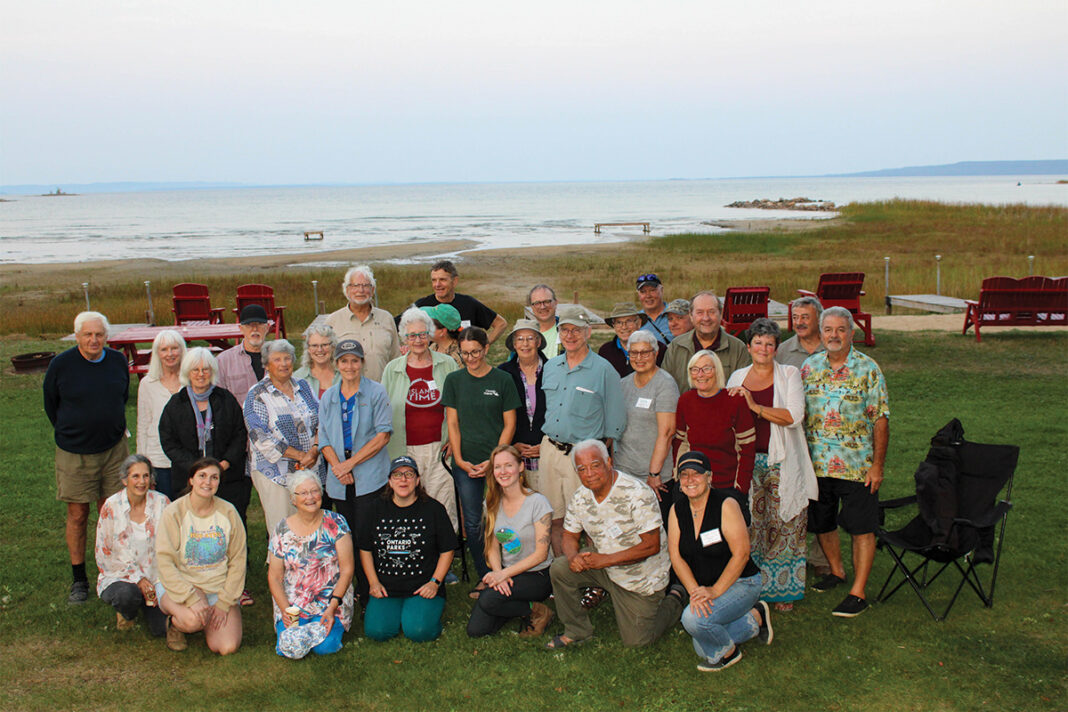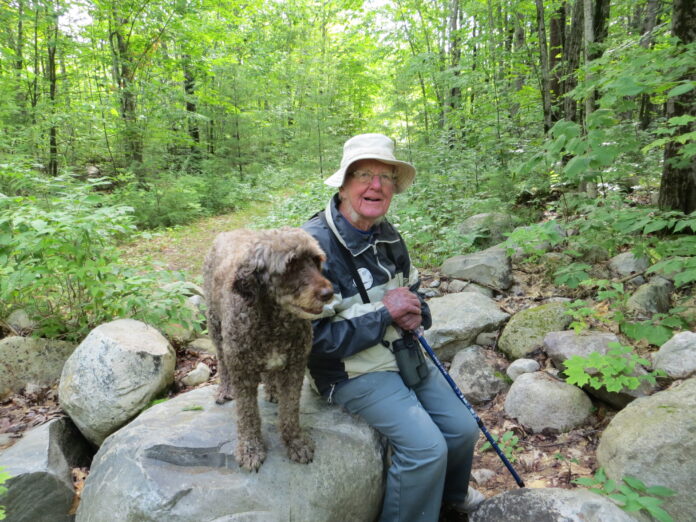KAGAWONG—The Manitoulin Nature Club was proud to host a three-day event at the Hideaway Lodge in Kagawong for the Ontario Nature Northern Fall Regional Meeting, Friday to Sunday, September 13 to 15.
There were seven nature organizations from across Northern Ontario present at the event: Penokean Hills Field Naturalists (Elliot Lake), Sault Naturalists, Junction Creek Stewardship Committee (Sudbury), Sudbury Naturalists, Nipissing Naturalists Club (North Bay), Manitoulin Nature Club, Friends of Misery Bay and the overall umbrella organization, Ontario Nature.
The attendees were kept busy with many field trips and hikes throughout the weekend. There were guided hikes at Misery Bay Provincial Park, Waggs Woods Trail, Providence Bay and Carter Bay, and an informative presentation on owl and hawk banding by Garth Baker on Friday evening.
Saturday’s agenda included two presentations, afternoon and evening speakers with a barbecue in between. Megan Bonenfant of the Nature Conservancy of Canada spoke on the ‘Bats of Ontario.’
John Diebolt, Ontario Nature’s Northern regional director, introduced Megan Bonenfant and in his introduction, he said, “After more than a decade in the provincial and municipal government sectors, Megan joined the Nature Conservancy of Canada in 2021 as their lead conservation biologist of the Manitoulin Island archipelago.” He added, “Megan is a lifelong nature nerd with a soft spot for maligned species (batty about bats).”
Due to illness, Ms. Bonenfant was not present at the Hideaway Lodge in Kagawong, but joined the group by Zoom. Her presentation, no doubt, would have been all the more impressive had she been able to stand before the group, instead of delivering her talk over the internet, but her facts and figures and her delivery, on a topic she is so passionate about, suffered little. She began her talk with the land acknowledgements for Mnidoo Mnising. Then introduced herself further by saying, “I am very privileged to call this place home. It’s a very special place, as we all know. I am equally grateful for the responsibility that comes with that privilege.” Throughout her talk, Ms. Bonenfant frequently spoke of the responsibility we all share in making this planet safer and healthier for all beings, most especially the endangered species, as so many bat populations are now.
Her first goal was to dispel the many rumours that continue to plague these poor creatures to this day.
“Bats are not actually blind,” Ms. Bonenfant stated emphatically. “True, they use echolocation to help them navigate and hunt, but their eyesight is perfectly fine. Bats do not get caught in your hair.” Another myth is that most bats will drink blood—incorrect. “There are three species of vampire bats in the world, they live in South Central America, they’re quite small and they feast primarily on livestock—chickens and cattle. That’s not to say, if you’re on your yacht near South Central America, sleeping out on your open deck, you just might want to put a mosquito net up. But humans are not their primary target prey.”
Ms. Bonenfant spoke for an hour, giving her audience fascinating facts about bats in general and, more specifically, the eight different species of bats found in Ontario, of which Manitoulin has been home to seven of these species. She spoke of the mating practices of five of the eight species, because little is known of how the silver-haired bat, the hoary bat or the eastern red bat mate, the others congregate in large groups, around mid-August in what is called swarming sites, usually abandoned caves. Because female bats can store sperm in their reproductive tract during hibernation, they won’t give birth till the next spring, usually early June.
She explained how tree bats will migrate to warmer climates when winter comes, while cave bats will hibernate, finding a spot that will remain above freezing, and entering an inactive state known as torpor. It’s important that these hibernating bats are not disturbed; that they do not wake up in the winter months, causing them to burn stored energy required to get them through the hibernation period.
Other amazing facts: a newborn bat weighs 25 percent of its mother’s weight, and she carries that baby for weeks while she hunts for food. White nose syndrome, a fungus infecting the nose, ears and wings, has decimated bat populations in several of the species. Bats, in early spring and summer can eat an insect every two seconds, increasing their body weight by about 25 percent in just 30 minutes. Addressing the declining population, caused by white nose syndrome, the location of some wind turbines adversely affecting them, and the decrease in the insect population, which they feed upon, Ms. Bonenfant ended with positive ways in which everyone can help to improve the health and safety of bats: protect and maintain wetlands; embrace and encourage insect diversity; leave standing dead trees; install bat boxes, and support research. Simple yet effective ways to help these important creatures in our eco-system.
Ms. Bonenfant’s passion became everyone’s interest by the end of her presentation. And though perhaps not batty, those formerly fearful of these little creatures, had gained a new and abiding respect for bats.
by Margery Frisch





